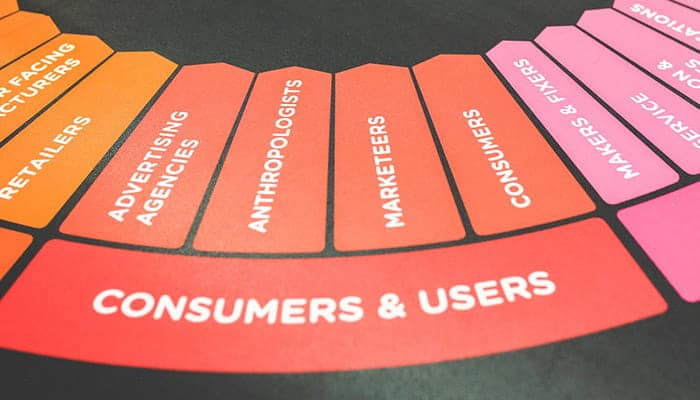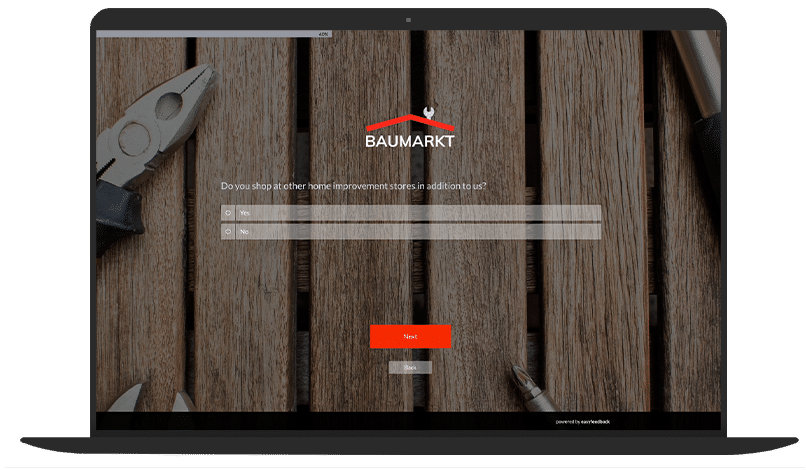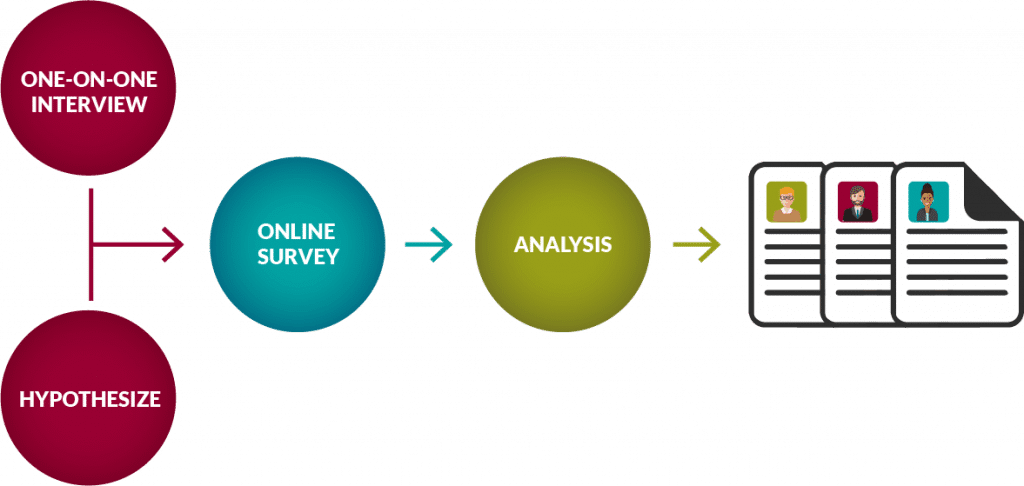Four reasons why a target group analysis makes sense
“The customer is king!”
Pretty much every company would probably agree with this statement at first.
However, an honest and self-critical look at the thinking and working methods anchored in the company quickly reveals that there is still a lot of room for improvement when it comes to customer satisfaction.
A critical look behind the scenes reveals that many companies have enormous weaknesses in customer acquisition, retention and communication, which inevitably affect the level of customer satisfaction.
With a target group analysis, you develop an understanding of your customers and are ultimately able to increase and maintain customer satisfaction.

Before you start creating a target group analysis, it is essential to understand why such an analysis is so important and where the dangers lurk if you do not deal with this topic.
In my opinion, the four most important reasons why there is no way around analyzing your target groups are the following:
Reason 1: Different customer requirements as they move through the customer journey.
A great customer experience can by no means be reduced to a high-quality product, good customer support, or competent advice.
The various influencing factors of a first-class customer experience are many times more complex and ultimately encompass all touchpoints in the entire customer lifecycle of your target groups.
Therefore, it is not only important to be able to list your target groups, but to deeply understand their lifestyle, their problems and their needs in the different phases of the customer journey.
A proven tool is the creation of (buyer) personas. This creates a picture of the most important person profiles of your target group. This enables you to develop targeted content that actually helps your customers.

Reason 2: Behavior and expectations of today’s customer.
The digital transformation has led to a drastic change in the way customers research solutions to problems, evaluate products and services, make purchasing decisions, and ultimately use the products and services they have purchased.
Consequently, the framework conditions in product development and especially in marketing and sales have inevitably changed fundamentally. We live in the age of the self-determined customer. In addition, the speed of change in customer requirements is constantly increasing.
As a result, companies that are unable to react quickly to changing target group requirements and keep up with the high level of adaptability of modern competitors will inevitably be forced out of the market. Just a question of time.
Meeting customer needs, in turn, requires a deep understanding of the real issues, challenges, concerns, goals and needs that move your customers on a day-to-day basis. And this is where the problem for many companies begins.
Reason 3: Personal opinion vs. validated audience data
There’s a drastic difference between basing your supposed understanding of your target audience on personal assumptions and opinions of various stakeholders in the company, and statistically validating the information you have about customers.
Just because ten customers have expressed the same or a similar opinion to a manager or salesperson, this does not automatically apply to everyone in your target group.
Personal opinions and assumptions should therefore be treated with extreme caution when it comes to the question of which measures in marketing, sales and product development should be evaluated and prioritized and how.
In recent years, seemingly unnoticed by many companies, a new standard has established itself that increases the overall customer satisfaction of those companies that understand how to truly make the customer king.
And they do this long before the customer actually becomes a customer. It’s the way companies communicate, develop their products and sell them unobtrusively.
And although many people in the target group probably couldn’t even name all the details themselves that they like so much about a company and the product or service, these days they expect precisely this new standard that makes them the true king.
Reason 4: Disruptive competitors on the rise
Suddenly they arose! The new players on the market who appear as if from nowhere, bring absolutely competitive products and services to the market and make long-established companies sweat profusely. What is their secret? What makes these disruptive competitors so successful?
How do they manage to secure significant market share in relatively short periods of time, while the old hands struggle more and more, unable to comprehend what is actually happening?

Well, the answer is simpler than you might think:
- The main reason: Most young companies bring contemporary ways of thinking and working with them right from the start, which differ drastically from the traditional approaches to which conservative companies often frantically cling.
- Furthermore, modern companies think and work in an absolutely customer-centric way. They place the customer at the center of all activities in marketing, sales and product development, without exception, in order to meet their high demands quickly and as precisely as possible.
- Disruptive companies have a profound understanding of their target groups because they listen to their customers. They are able to meet the information needs of the target group in the respective phases of the customer journey.
- And they consistently align their sales process with customers’ buying process, not the other way around. Furthermore, disruptive competitors rely on cross-departmental cooperation through interdisciplinary teams instead of sticking to traditional hierarchies and departmental thinking.
- Marketing and sales form a powerful unit and work at eye level instead of believing that sales is the untouchable deity of the company.
- Satisfying customers early and continuously is a top priority for modern companies, and they manage to respond relatively quickly to changing target group requirements.

Thus, it is primarily agile values and principles that underlie the way disruptive competitors think and work. In the following sections, we look at these ways of thinking and working in detail.
Ways of thinking and working to achieve customer centricity
Even if it may seem rather unspectacular at first glance, it is to a significant extent the way of thinking and working that paves the way for disruptive competitors to succeed and makes the difference.
In the following, I will explain in more detail how successful companies think and act.
This is because only the right corporate mindset enables customer centricity and paves the way for customer satisfaction analysis and (buyers) personas that are actually used in the company.
In the following, I will discuss the central ways of thinking and working that have the potential to sustainably strengthen the future and competitiveness of your company.
The prerequisite, of course, is consistent application in everyday work in order to bring about a gradual anchoring in your corporate culture.
Depending on the size of the company and historically determined procedures, it can be more or less complicated to allow and establish this kind of change.
The important thing is to take the first step and just get started. You’ll notice as you read the following five points that they are very closely related and interact with each other.
1. Valid data before personal opinions
A widespread and serious problem in companies is the way decisions are made in marketing, sales and product development.
This is because typically – as already touched upon above – most companies plan future actions or product features based on metrics evaluations and a large portion of opinions, assumptions and personal preferences.
This approach is very likely to result in marketing and sales that fail to communicate to their target audiences or develop product features that no one needs.
To implement highly effective marketing and sales campaigns and develop successful products, the following approach is recommended:
- Conduct an initial target group analysis
- Regularly collect customer feedback throughout the customer lifecycle.
- You should also statistically validate the collected data and then use it as a basis for decision-making.
For example, if 80 % of your customers want marketing to provide them with information on topic X to solve problem Y, then these customer needs should be prioritized accordingly, rather than fulfilling the wishes of the highest paid person in your company.
Sounds plausible? And yet very few companies do this consistently.
2. Voice of the customer – give customers a voice
A famous quote states:
“Those who are not able to listen, loses the right to be heard”.
This quote hits the nail on the head! Therefore, it is absolutely essential that you give your target group a voice and listen carefully to what problems, challenges, concerns, goals and needs really move the people in the target group in their everyday lives.
It’s important that you don’t just survey the target group once, but that you firmly integrate different feedback mechanisms at the most important touchpoints in the customer lifecycle and thus regularly collect data that will provide you with valuable insights.
>> Video: 3 Customer Experience Touchpoints <<
This means, for example, that you can ask your customers what their most important professional goals are, their biggest challenges, and barriers to implementation.
Try to find out what is preventing them from achieving their goals and what would best help them overcome these implementation barriers.
Do your customers lack a certain technical know-how that prevents them from using your products and services successfully and regularly? If so, become a problem solver and help your customers achieve their goals easier and faster.
With targeted content to match the challenges of your target audience at each customer stage, you’ll be able to respond in a helpful way. You’ll find that you’re bound to become even more successful that way.
Be sure to think outside the box and get rid of the misconception that it’s all about good products and services. The shoe often pinches at another point in the field of activity.
3. Cross-departmental cooperation instead of silo thinking
No one department will ever be able to single-handedly build a valid picture of the target audience and create a great customer experience.
This is simply because every customer comes into contact with your company at different touchpoints in the customer lifecycle, which by their nature are either in marketing, sales, customer support, product development or other departments.
Therefore, establishing customer-centric collaboration between the different departments is essential to your success.
If your company is also siloed and each department tends to do its own thing, you should break this down as soon as possible, as departmental thinking is very detrimental to your company’s level of success. Perhaps that’s easier said than done.
But the key to a highly successful organizational structure is to put aside competitive thinking among departments and employees, network with each other across departments, share knowledge and form a strong unit.
If each department cooks its own soup and keeps important information to itself, this automatically reduces the potential for innovation in the company.
To permanently eliminate silo thinking and promote joint cooperation, we recommend regular meetings or insights meetings with various departments to share the latest findings and create a common understanding of your target group and its requirements.
Satisfying the customer early and continuously
Satisfying the customer early and continuously is a top priority for modern companies.
This requires regular feedback loops with customers to identify needs and weaknesses in the customer experience and translate them into targeted optimization measures.
What’s important here, however, is that you don’t just collect feedback… and collect… and collect… but get up to speed in a timely manner and actually utilize the insights gained.
The reason I emphasize this at this point is because there are many companies that collect customer feedback, but don’t evaluate the data they collect and then let it gather dust.
There is often a lack of meaningful and purposeful prioritization of measures, so that you have the feeling of being completely overwhelmed working on too many construction sites at once and not really making a difference. Prioritization is everything.
Therefore, when prioritizing, regularly ask yourself which actions are likely to have the greatest impact for your target audience and ultimately you as a company.
>> Video: Derive measures from the results of a survey <<
In summary, successful early customer satisfaction requires regularly collecting customer feedback, statistically validating the data collected, deriving insights from the data, translating those insights into targeted optimization actions, and finally taking timely action.
Responding quickly to changing requirements
Another highly prevalent problem is the urge to stick to a plan created months ago, even though you may have gained new insights about your target audience that clearly point to a needed course correction.
By this, I do not at all mean that one should discard the previous week’s plan every week.
What is meant is that one should generally avoid oversized project and action plans, as these by their nature have long durations, are very rigid and typically not adaptable.
Lean Method as solution
Disruptive competitors are adaptable and can respond quickly to changing customer requirements because they operate using the Lean Development Method.
The Lean Method follows the principle of "Create, Measure, Learn, Iterate, Scale" and empowers companies to achieve relevant results faster, eliminate waste, and remain adaptable.
What is the approach?
- Instead of planning a rigid and oversized project, a lean version of product features or marketing campaigns is created first and released in a timely manner.
- Then, performance is measured to gain experience and learn what works well and what works less well.
- Based on insights gained regularly, the product or campaign is then optimized iteratively.
- Scaling is only done at a later point in time, when a solid, well-functioning basic version has already been sufficiently tested.
Can’t be done, doesn’t exist.
It wouldn’t surprise me at all if, after reading the previous five points, you came up with more than one reason why such a change in thinking and working methods is not possible, especially in your company.
At this point, I would like to point out the following: Such a fundamental paradigm shift is undoubtedly not easy, especially if you have historically strongly entrenched procedures in your company.
BUT… it is possible! It is definitely possible, even though there may be strong resistance at one point or another in your company.
Ultimately, as a decision maker, you have to ask yourself a simple question: Can and do you really want to take the risk of being displaced by disruptive competitors who have understood how the hare runs? Or are you prepared to adapt your way of thinking and working to the pulse of the times?
True customer centricity as a success factor
By far the most effective change that I strongly recommend to every company is to unconditionally put its customers at the center of all measures.
By doing so, you will solve the core problem of most weak points in customer acquisition, retention and communication.
True customer centricity is a mindset.
And a customer-centric mindset automatically leads to a customer-centric way of working. The importance of giving your customers a voice and capturing regular customer feedback throughout the customer lifecycle cannot be stressed enough.
True customer centricity is made possible by gaining a deep understanding of your customers’ true issues, challenges, concerns, goals, and needs through regular feedback, and translating those insights into purposeful action.
Marketing, sales and product development should always work with so-called persona profiles or buyer personas that are created as part of a target group analysis.
Persona profiles are a helpful working tool that quickly conveys to every employee in the company what makes the respective target groups tick and what problems and goals they have.
They create a common understanding of your customers across departments and form the basis for a customer-centric approach.
5 steps to create buyer personas through audience analysis
By using persona profiles, you’re setting the stage for a customer-centric approach that is timely and truly makes your customer(s) king. This allows you to align your content creation with the needs of your target audience.
Below, I’ll go over the five key audience analysis steps for creating statistically validated buyer personas.
By statistically validated, I mean using representative persona profiles that create a deep and shared understanding of your customers across departments.
It may even make sense for your company to develop separate buyer personas and user personas.
This is because the use of a buyer persona aims to optimize the customer journey, while the use of user personas aims to optimize the product experience.

Step 1: Gather hypotheses internally
You remember: Cross-departmental cooperation promotes innovation and fosters business success to a significant degree.
Put this theory into practice right at the beginning:
- Kick off your target group analysis with an interactive persona workshop with relevant stakeholders from different departments.
- Share your knowledge, experience, and insights about customers, their problems, challenges, goals, and needs, and document this information in summary form.
- Keep in mind, however, that the information you gather should be considered only as unconfirmed hypotheses about your target audience.
In preparation for the audience analysis workshop, it’s also a good idea to access existing data sources: Check with your web analytics tool (Google Analytics, for example) to see what you already know about your target audiences.
Social media platforms also offer the possibility to evaluate age, gender or interests of your target group via analysis tools.
Combine this historical data from the target group with input from relevant stakeholders. They provide valuable personal experience, opinions, assumptions and preferences. These are now statistically validated using an online customer survey.
You know the reason behind it: Valid data before personal opinions.
Step 2: Individual interviews with existing customers
The next step in the target group analysis is to give your customers a voice. In one-on-one interviews with customers (and, if applicable, prospects and lost opportunities), you find out exactly what moves the (potential) customer in his or her everyday life.
The type of interview questions depends on what exactly you want to find out about your target group or your buyer persona in which area of the customer lifecycle.
If you want to explore the information needs of your target group in the context of purchasing processes, then the questions should be aimed at the phases of the customer journey.
Or do you want to find out what exactly would help your customers to use your products or services more successfully and where they see usability problems or optimization potential?
Therefore, when designing the interview guide, ask yourself in which area of the customer lifecycle the customer survey should move and what exactly you want to find out about your target group.
Step 3: Online surveys for statistical validation
You then conduct an online survey with as many existing customers as possible in order to statistically validate the internal hypotheses previously collected as well as the hypotheses from the individual interviews.
The larger the sample or participation rate, the more representative the survey results will be. When designing the questionnaire, make sure that you also ask for demographic data of your target group in order to be able to create filters and comparisons based on various characteristics.
For example, if you are a software vendor, you could ask about the frequency of using your software in one question and the biggest technical challenges in another question.
Then, for example, when evaluating the survey, you could create a filter that illustrates correlations of business challenges and frequency of use of your software.
Step 4: Evaluate and derive findings
The next step in the evaluation is to analyze the data collected and derive relevant insights. Can different (buyer) personas with different problems and requirements be derived from the survey data using evaluation filters and comparisons?
If so, what are the specific differences between these personas?
- Are there any noteworthy trends, tendencies, moods or patterns discernible in the evaluation that express the need for special actions in marketing, sales or product development?
- Which facts are pronounced in the target group and to what extent?
- What is more important and what is less important?
Recognize what is clear, but also read between the lines and try to identify correlations of facts. This way you will gain new insights and valuable information about your target group.
>> Video: How do I interpret results from a survey? <<
Step 5: Create buyer personas and bring them to life
In simple terms, the persona profile is a clear one-pager document that presents the findings of the analyses in step 4 in a highly condensed yet meaningful way:
- Each persona profile stands for a fictitious customer who represents and describes in detail a subgroup relevant to you from the large mass of your entire target group.
- It succinctly expresses what makes the persona tick and what problems, challenges, concerns, goals and needs they have.
- Keep in mind that a (buyer) persona profile is a living document. This means that the persona profile will be updated regularly based on new information and insights as customer needs change and evolve, or as you gain new insights that require you to update the profile.
- Your persona profiles are the foundation for customer-centric content planning and creating relevant content for your customers.
In order to obtain new information and insights and to keep your target group analysis up to date, you need to regularly collect customer feedback in the various phases of the customer lifecycle.
Conclusion: Regular customer feedback makes optimization potential visible
The secret to the success of disruptive competitors lies to a decisive extent in their contemporary way of thinking and working, which places customers at the center of their actions without restriction. Modern companies give their customers a voice.
They regularly collect feedback throughout the entire customer lifecycle and make data-based decisions for the targeted optimization of the customer experience.
Those who ignore this new standard inevitably run the risk that their own customers will sooner or later switch to the competition because they feel they are being treated like royalty there.
In the age of the self-determined customer, anyone who wants to sustainably strengthen the competitiveness of their company must inevitably develop a profound understanding of the true problems, challenges, concerns, goals and needs of their customers.
This is because target group analyses, personas and regular customer feedback can be used to identify weak points and optimization potential in the customer experience in order to derive targeted measures in marketing, sales, product development and other departments.





